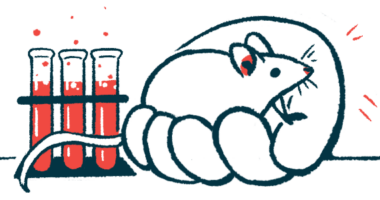Reflecting on what I did right after I was diagnosed with ALS
How columnist Dagmar Munn found balance in life with ALS

Every once in a while, a common question circulates on ALS social media sites: “What would you do differently if you were diagnosed today?” The replies are interesting and often filled with regrets, such as trips not taken or home modifications made too late.
I’ve participated in these discussions and even wrote a column about my own first-year mistakes. But now that I’m in my 13th year of living with ALS, I believe there’s more value in studying the things I think I did right, rather than those I did wrong.
When I was diagnosed with ALS, I felt like the rug had been pulled out from under me. But instinctively, I knew I had to get up and keep going. What helped me rebalance my shattered emotions was relying on the wellness principles I’d taught to others during my professional years. These included the Six Dimensions of Wellness, a change in perspective, and a simple strategy to combat daily stress speed bumps.
Balancing my life dimensions
Developed in the 1970s by Dr. Bill Hettler, co-founder of the National Wellness Institute, the Six Dimensions of Wellness model represents elements and behaviors that anyone can use to create their own path to optimal living. The six dimensions are occupational, physical, social, intellectual, spiritual, and emotional.
Because ALS brings so much focus to our physical needs, often consuming the majority of our energy and time, the physical dimension can overtake the other five. Our life can feel unbalanced, and we may lose our sense of self.
Figuring out how to stay engaged in all six dimensions was a challenge, but I’m glad I did it. As a matter of fact, my experiences in this endeavor make up the bulk of my “Living Well With ALS” columns. I encourage you to explore them all.
Learning to pivot
Another challenge for me was finding a new purpose, or simply something meaningful to fill my days. I noticed many ALS patients had a warrior mindset. For them, each day was a battle, and accepting change was a defeat. Then there were the standout patients who accepted their diagnosis and moved on with their lives. They found a way to continue participating in life, remaining noticeably positive, optimistic, and hopeful. I wanted to have that attitude, too.
So I worked hard to mentally embrace the changes happening to me and gave my goals a pivot. Rather than being overwhelmed with what I could no longer do, I considered what I could accomplish. The groups and clubs I belonged to still needed help; my new limitations just meant I’d be helping in different ways. Writing online newsletters, helping track memberships, and even learning to build a website were all projects that helped me find purpose.
Snuffing out daily stressors
Despite my lofty goals and mental focus, those pesky little speed bumps continued to pop up, often at the worst of times. Dead batteries, Velcro that sticks to things it shouldn’t, a printer running out of ink, and more. I think you’ve had these, too.
The simple technique I use is called “checking in.” It’s basically asking yourself three questions: How do I feel? What do I need? Who can help me?
I ask them when speed bumps happen to help diffuse my growing anger. I ask myself those same three questions 10, sometimes 20 times a day. And every time I answer, I have more patience when things get muddled. And I’m calmer when they don’t happen at all.
Looking back, I’m proud I followed these strategies early on with my ALS, and I hope they can be of help to you, too. Let’s continue to help each other learn to live well while living with ALS.
Note: ALS News Today is strictly a news and information website about the disease. It does not provide medical advice, diagnosis, or treatment. This content is not intended to be a substitute for professional medical advice, diagnosis, or treatment. Always seek the advice of your physician or other qualified health provider with any questions you may have regarding a medical condition. Never disregard professional medical advice or delay in seeking it because of something you have read on this website. The opinions expressed in this column are not those of ALS News Today or its parent company, BioNews, and are intended to spark discussion about issues pertaining to ALS.








Comments
Les Cotterill
Dear Dagmar,
Thank you for your post today about what you did right when diagnosed with MND, I found it very interesting.
For my part I first noticed a problem nearly 2 1/2 years ago and was diagnosed on St Valentines Day 2022, not a nice way for my wife and I to spend such a special day.
From the word go I have had tremendous support from the Outreach Team and Social Services in Lincolnshire, England, where we live. Within a few weeks I had received home visits with recommendations on what alterations would need to be made to allow wheelchair access both into and round out bungalow and what equipment I would soon need, such as hoists, wheelchair, electric wheelchair and mobility scooter and Wheelchair Accessible Vehicle.
All this information came as very hard for my wife and myself as we had always been very active people. Like everybody else I was in hope that the diagnosis was wrong but I quickly noticed the deterioration in my condition.
Instead of burying our heads we took onboard the suggestions and we are really pleased we did. I now find myself needing to use either a wheelchair or mobility scooter outside the bungalow and already use the hoist to get in and out of the bath.
One thing I did do early on was sit down and look at what I had achieved in life, both in terms of marrying the love of my life, raising our children and now having grandchildren and looking at the interactions I have had with people all my life.
We do feel robbed but we are also grateful that we have been married for nearly 39 years and even now we are about to go on a 2 week cruise.
We all know our time is limited and that even if I was fit and well, there will still come a day when I will no longer be here.
I do worry about what is going to happen to me and worry even more about what will happen to my wife afterwards. We have a number of friends and I know she will get good support.
Very early on we got our finances sorted and now my wife has a lot more knowledge of the household accounts and how to arrange tradesmen or get the car fixed. I have come to know a few people in my area with MND and now I feel able to give them support and in a strange way help other people with other life threatening illnesses because they know I am going through a bad time.
We do not set daily tasks, we seek to find one or two things we can do during the week, such as going out for a drive to the seaside and going to games club. We do try and make the weekly coffee morning at out local hospice where we play games and spend 2 hours completely forgetting we have any problems. We also like to go to our local MND group where we discuss ailments and share experiences, such as good places to go in a wheelchair or mobility scooter. None of these events are set in stone. They are all dependant on how I feel. Sometimes I can do a few little things, other times I realise I have overdone it and need to rest .... sometimes I just do not feel like doing anything.
We have no choice but to keep going. Fortunately, I am able to recall a number of our memories because both my wife and I have enjoyed taking photographs. My visits to hospital are becoming ever more frequent but even there I have managed to meet a number of wonderful people. I have often said, that for as bad as it is to have something like MND, I have managed to go to a number of places and meet so many lovely people that I would not otherwise have visited or met.
MND is very real but I took heart from the story of a lady now in her 80's who has been going blind for a number of years and now only has 6% vision. She is still going to places round the world making mental images and memories with her guide dog so that come the time when she is blind, she can still remember what is like around her and remember all the wonderful things she has done and seen. If that is not inspirational, then I do not know what is.
Les Cotterill